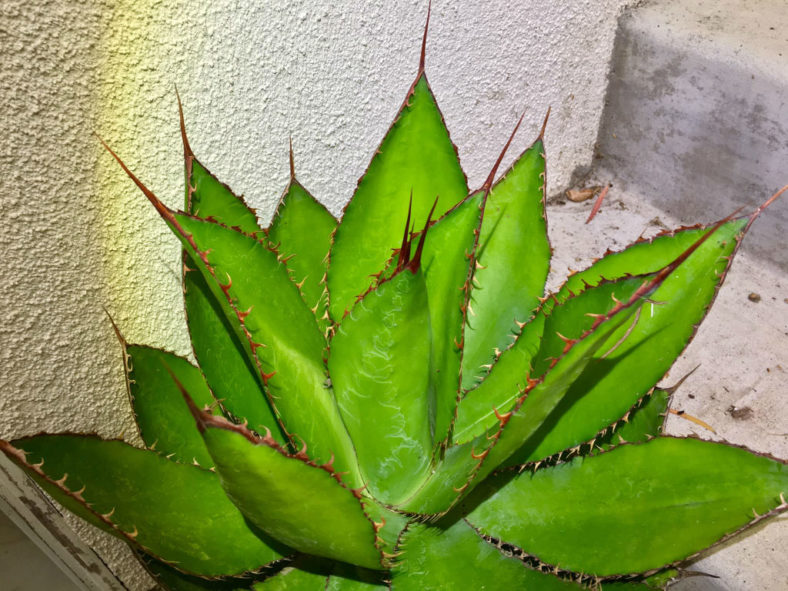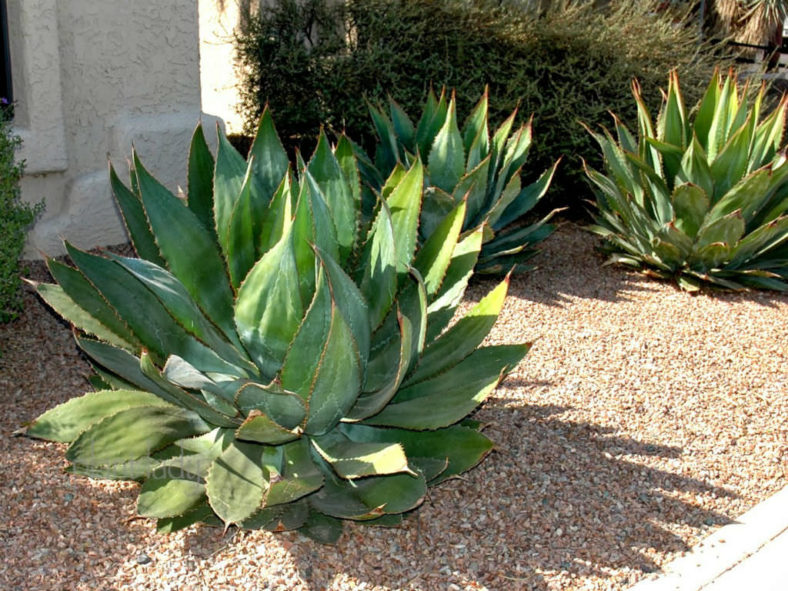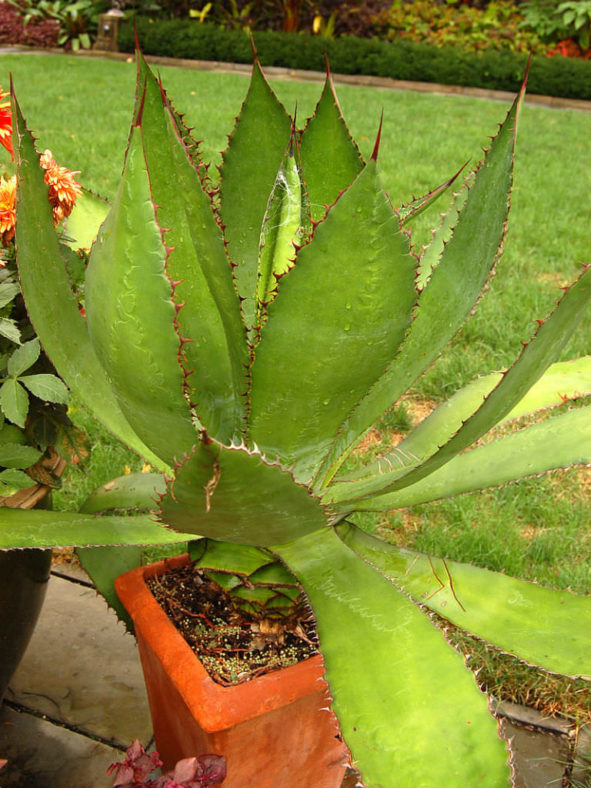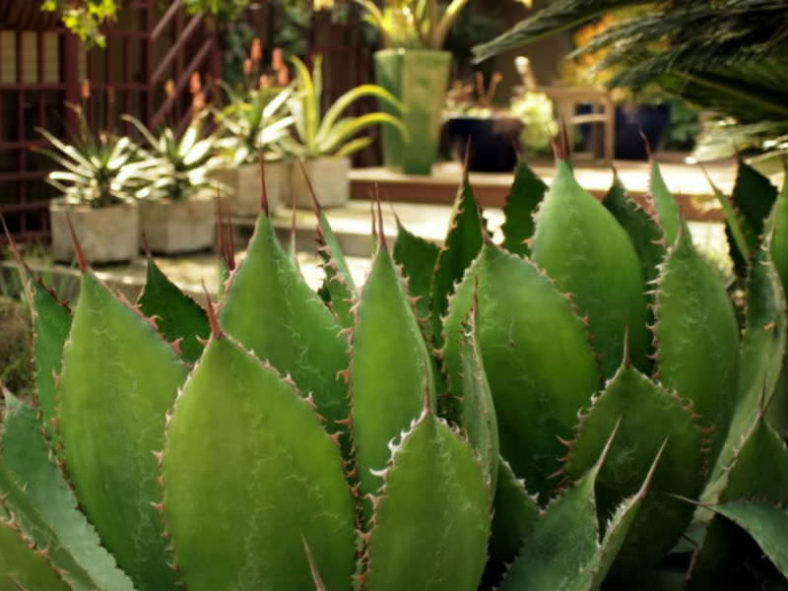Scientific Name
Agave bovicornuta Gentry
Common Name(s)
Cow Horn Agave
Scientific Classification
Family: Asparagaceae
Subfamily: Agavoideae
Genus: Agave
Etymology
The specific epithet "bovicornuta" (pronounced "boh-vy-kor-NOO-tuh") means "cow-horned" and refers to teeth that recur in opposing directions, resembling a cow's horns.
Origin
Agave bovicornuta is native to mountainous regions in the Mexican states of Chihuahua, Sonora, and Sinaloa.
Description
Agave bovicornuta is an attractive succulent that forms a solitary rosette of yellow-green to pale green leaves attractively edged with sharp, reddish to dark brown teeth and ending in a long, stout terminal spine. The rosette can grow up to 3 feet (90 cm) tall and 5 feet (1.5 m) in diameter. The leaves are broadly lanceolate or spatulate, and broadest in the middle, measuring up to 32 inches (80 cm) in length and 8 inches (20 cm) in width. They are decorated by bud imprints caused by teeth pressing into the flesh of inner leaves before they unfurl. Some marginal teeth recur back toward the base, and others toward the tip.
When the rosette matures, which usually takes 12 years or more, it produces a branched inflorescence with short side branches that bear terminal clusters of yellowish-green flowers. The inflorescence begins to emerge in fall, grows slowly over the winter, and matures during the spring, reaching a height of up to 23 feet (7 m). The flowers can measure up to 2 inches (5 cm) in length.
Hybrids

Hardiness
USDA hardiness zone 8b to 11b: from 15°F (-9.4°C) to 50°F (10°C).
How to Grow and Care
Agave is not a difficult plant to grow. They're slow-growing and dramatic and will even thrive on a bit of neglect. If you're the type of person who likes to fuss with houseplants and water a lot, Agave is probably not the plant for you. On the other hand, if you're the type of person who likes to set it and forget it, and you have a sunny window, Agave might be the way to go. Be aware that some large varieties will eventually outgrow your room (unless you have a large greenhouse), and Agave can be aggressive. They have irritating sap and sometimes very sharp thorns that can cause injuries to small children and even pets.
In general, Agaves do not need to be repotted every year. Most species commonly found in cultivation grow very slowly and take a long time to outgrow their pot. It's also best to handle your Agave as little as possible since they do not like to be disturbed. When repot, refresh the spent soil with a new potting mix and ensure the plant is firmly anchored in its pot. However, be careful not to pot the Agave too deep, as that will encourage stem rot during the growing season.
See more at How to Grow and Care for Agave.
Links
- Back to genus Agave
- Succupedia: Browse succulents by Scientific Name, Common Name, Genus, Family, USDA Hardiness Zone, Origin, or cacti by Genus
Photo Gallery
Click on a photo to see a larger version.


